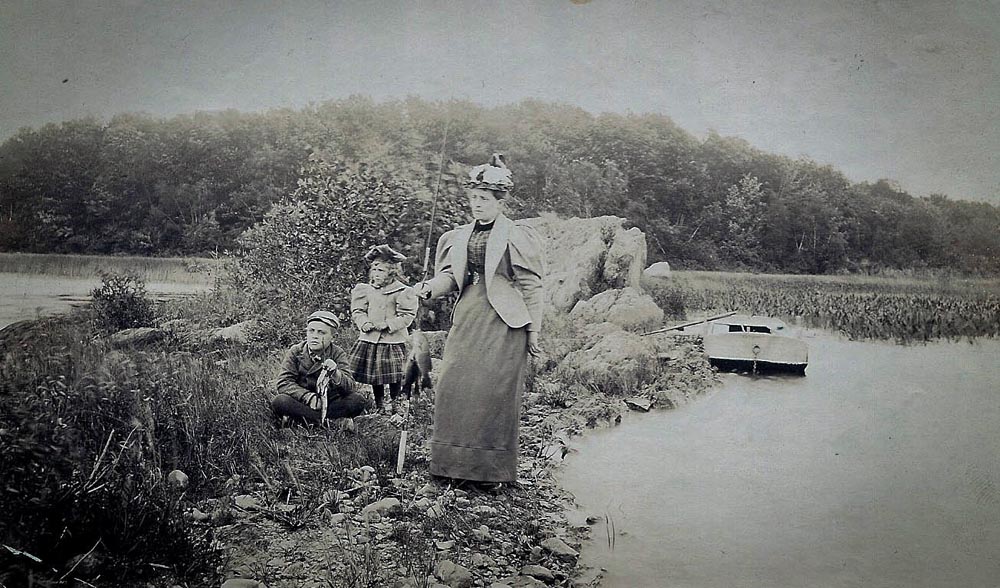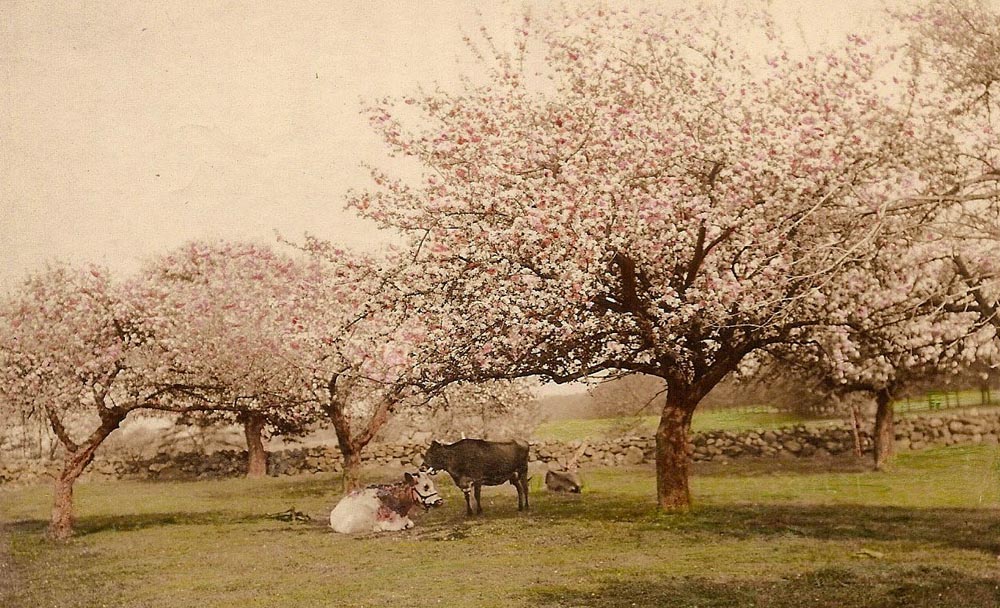True Tales: Take a Hike Part II
By George T. ComeauClick here to go back to part 1 of “Take a Hike.”
As you walk under the ancient maple trees that lead to Ponkapoag Pond, you are on a 160-year journey back in time. This half-mile path leads directly to the pond, and as you near the Ponkapoag Dam Project (watch for signs), you will have likely passed a rumored long-lost and unmarked burying ground of the Ponkapoag Indians.
Today, you have a choice of traveling to the right or left around the pond. I advise traveling counterclockwise — over the dam and into the woods. This historic path will lead you to a beach where generations of Cantonians have found delight in fishing the Ponkapaog Pond. This shallow, 217-acre Great Pond has a maximum depth of seven feet and an average depth of four feet. Years ago, a park ranger for the Metropolitan District Commission told me that one of the largest largemouth bass on record in Massachusetts was caught in this pond. In the summer there are large quantities of bass, chain pickerel, bluegill, pumpkinseed, black crappie, golden shiner, and redfin pickerel all hiding out in the weeds.
The Canton poet Winthrop Packard observed, “For in my pond the pickerel are surely the prominent citizens, the aristocracy, for they are the largest and strongest and they live directly off their fellow fishes, which constitutes an aristocracy in any community … All the pond world knows that and its denizens tremble in the presence of these great-jawed, hook-toothed gobblers of small fry.”
It is the pickerel in this pond that created a controversy in 1822. It took an act of the Great and General Court to pass Chapter 54, an act to prevent the destruction of fish that prohibited the “taking of pike or pickerel in the winter season, through the ice.” Canton’s own Elijah Crane had discovered that these fish spawn in February, and millions were being killed by ice fishing and thus depleting the stocks.
Walking on through the woods along the well-marked path, you will come to the Appalachian Mountain Club’s Camp. The small grove of cabins is on your left, and this has been an active part of the AMC since 1921. The campground started as a primitive retreat, and for 35 cents you could catch a bus from Mattapan and be at the shore in no time. Visitors would call up Professor Farnham, and the good professor would prepare biscuits, which would be consumed while watching the sunset over the pond. Farnham would also rent a club frying pan, coffee pot and fireplace to make the visit complete.
Around 1936, the cabins you see on your walk were built to accommodate even more club members. This popular destination is as rural as it gets in Canton. And today you can stay in these cabins for under $70 for the weekend off-season. I’m pretty sure that Farnham is not around to rent you a frying pan.

Mrs. Chester Horton, Mildred and Howard Horton on Strawberry Island, Ponkapoag Pond, around 1890 (Courtesy of the Canton Historical Society)
Walking on, follow the Green Dot Trail and pass through Shattered Rock Woods. To your left a well-marked departure on the trail brings you to the Ponkapoag Boardwalk. This wooden trail leads you through a quaking bog and the White Cedar Swamp.
Professor William Babcock of Eastern Nazarene College in Quincy originally built the boardwalk in 1947 with the help of his students. Constructed of logs laid side by side and running for a mile and a half, this was one of the best ways to visit a rare New England quaking bog. By the late 1960s, much of the boardwalk had simply rotted away. Rehabilitation began in the 1970s and continued in the mid 1980s by the team of the Youth Conservation Corps, led by Canton resident Tim Kernan.
In 1988, the Friends of Blue Hills assembled over 40 volunteers to completely rebuild the boardwalk using pine planks harvested at Quabbin Reservoir. To facilitate this heavy work, half the planks were brought out from northern shore, and half were floated over from the old fishing pier on the pond’s opposite shore.
The Ponkapoag Boardwalk was nominated to the National Register in 1979 and formally dedicated in 1989. Professor Babcock was in attendance, and despite suffering from Parkinson’s disease, he completed the two-mile round trip on the boardwalk.
Back on the trail, follow the path back onto the golf course and rejoin Maple Avenue. Your time travel is complete, and you have walked through more than 300 years of Canton’s history. The whole hike is about four and a half miles and takes under two hours. There’s nothing tricky here — it’s a beautiful way to see a part of Canton’s past that you may not have ever experienced.
Short URL: https://www.thecantoncitizen.com/?p=11750











